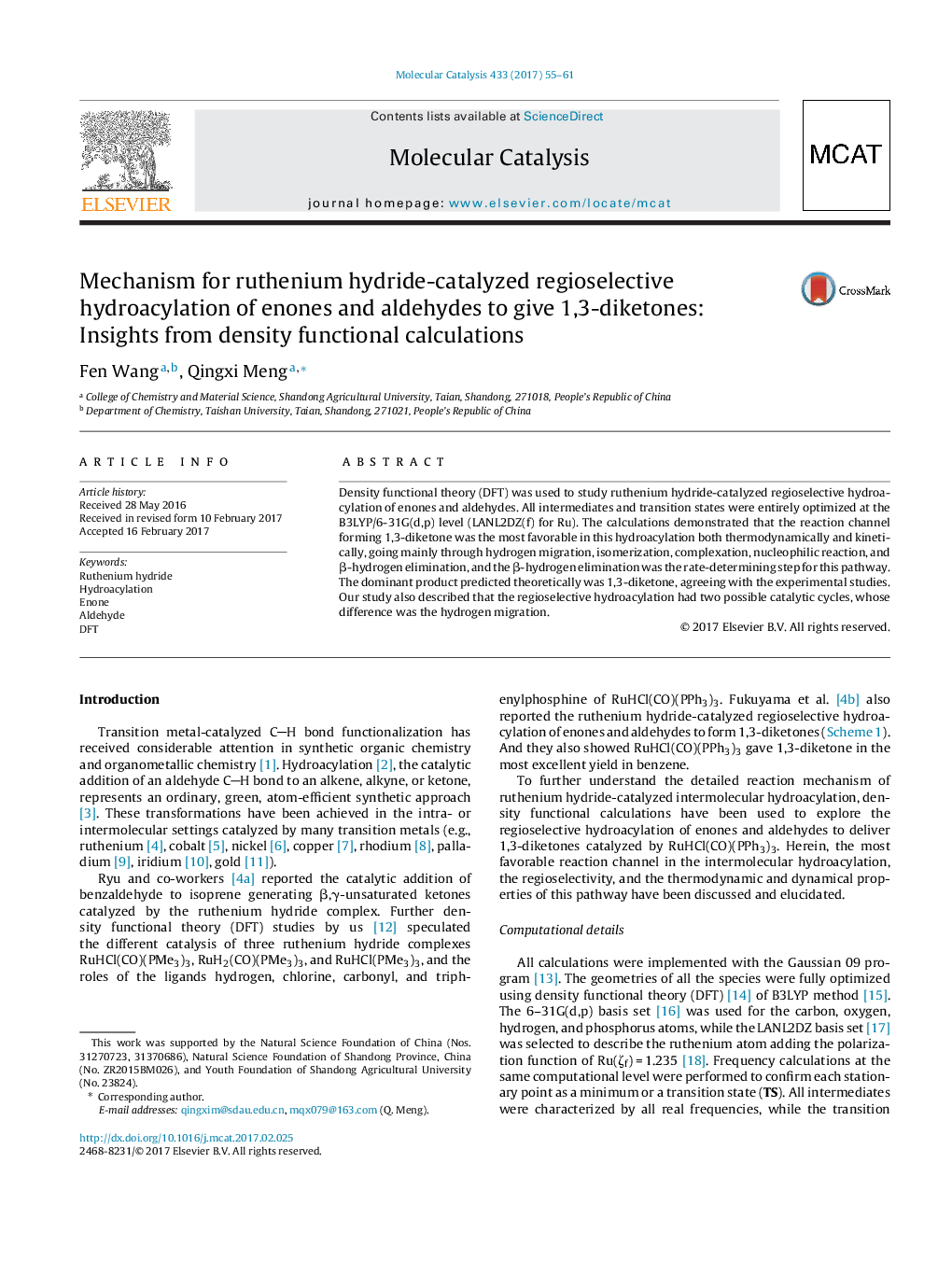| کد مقاله | کد نشریه | سال انتشار | مقاله انگلیسی | نسخه تمام متن |
|---|---|---|---|---|
| 6448829 | 1642730 | 2017 | 7 صفحه PDF | دانلود رایگان |

- DFT calculations studied ruthenium hydride-catalyzed regioselective hydroacylation of enones and aldehydes.
- In the progress of forming 1,3-diketone, the reaction channel “a” was the most favorable, and the β-hydrogen elimination was the rate-determining step.
- In the progress of forming 1,4-diketone, the reaction channel “e” was the most favorable, and the nucleophilic reaction was the rate-determining step.
- The reaction channel “a” was more favorable than the reaction channel “e”, so the dominant product predicted theoretically was 1,3-diketone.
- Our calculations also indicated that the regioselective hydroacylation had two possible catalytic cycles (cyclic path I and II), cyclic path I was more dominant relative to cyclic path II.
Density functional theory (DFT) was used to study ruthenium hydride-catalyzed regioselective hydroacylation of enones and aldehydes. All intermediates and transition states were entirely optimized at the B3LYP/6-31G(d,p) level (LANL2DZ(f) for Ru). The calculations demonstrated that the reaction channel forming 1,3-diketone was the most favorable in this hydroacylation both thermodynamically and kinetically, going mainly through hydrogen migration, isomerization, complexation, nucleophilic reaction, and β-hydrogen elimination, and the β-hydrogen elimination was the rate-determining step for this pathway. The dominant product predicted theoretically was 1,3-diketone, agreeing with the experimental studies. Our study also described that the regioselective hydroacylation had two possible catalytic cycles, whose difference was the hydrogen migration.
Our study showed that Ru-catalyzed hydroacylation had two possible catalytic cycles (cyclic path I and II), cyclic path I was more dominant than cyclic path II.
Journal: Molecular Catalysis - Volume 433, May 2017, Pages 55-61